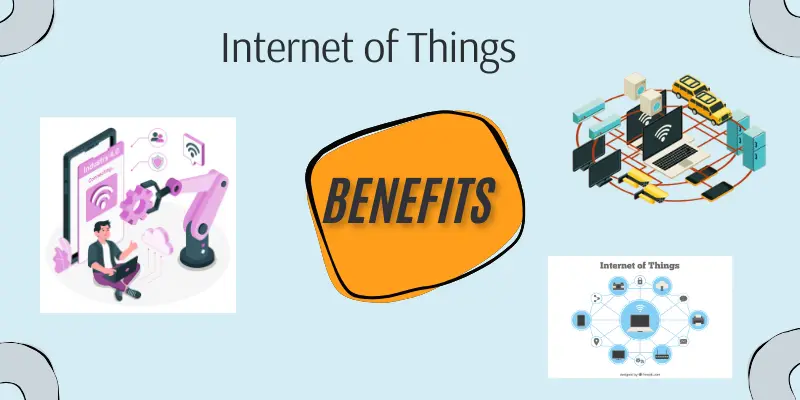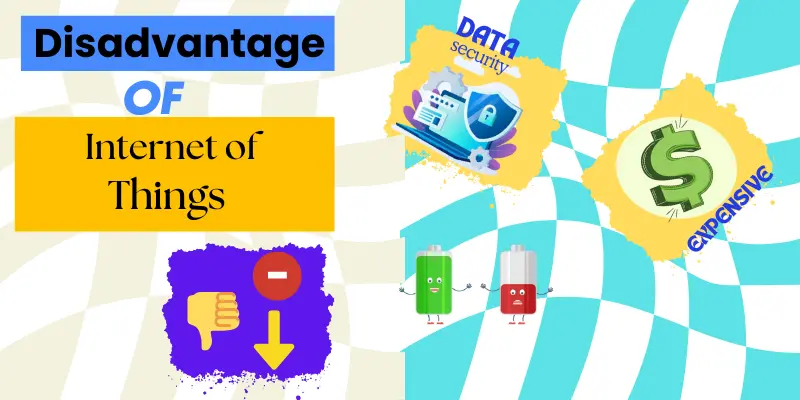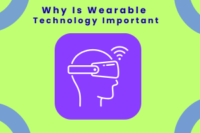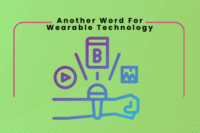Internet of Things: Advantages and Disadvantages
Published: 02 Feb 2025
The Internet of Things (IoT) is transforming industries by connecting devices and enabling smart automation. Studies show that by 2030, there will be over 29 billion IoT devices worldwide. However, while IoT offers benefits like efficiency and convenience, it also raises concerns about security and data privacy. Understanding the advantages and disadvantages of the Internet of Things is essential for businesses and individuals alike.
But like any other technology, it has pros and cons. Let’s examine the advantages and disadvantages of the Internet of Things, using devices as an example, to help you understand its real impact and value.
Advantages of Internet of Things
The advantages of internet of things are making life easier by connecting devices and improving how we work. From homes to businesses, IoT helps in many ways. Here are some key Internet of Things pros:

Here’s a list of the pros of internet of things:
- Better automation
- Remote access and control
- Energy saving
- Faster decision-making
- Improved security
- Easy tracking and monitoring
- Cost savings
- Smart healthcare solutions
- Better customer experience
- Increased efficiency
Let’s examine how the benefits of the Internet of Things positively impact us:
Better Automation
Better Automation in the Internet of Things (IoT) helps different industries improve efficiency by reducing manual work. It streamlines operations and enhances productivity. The benefits to various industries of Internet of Things include faster processes and smarter decision-making.
- Smart manufacturing – Automates production lines for higher output.
- Healthcare efficiency – Monitors patients in real-time for better care.
- Retail optimization – Manages inventory and customer data automatically.
- Energy management – Controls power usage to reduce waste and costs.
Remote Access and Control
Remote Access and Control in the Internet of Things (IoT) lets users manage devices from anywhere. While it offers convenience, it also comes with risks. Some issues fall under the cons of Internet of Things, like security and connectivity concerns.
- Manage devices remotely – Control smart gadgets from anywhere.
- Real-time monitoring – Track activities and data instantly.
- Security threats – Hackers can access connected devices.
- Network dependency – Devices stop working without the internet.
Energy Saving
Energy Saving in the Internet of Things (IoT) helps different industries use power wisely. It reduces waste and lowers costs by making smart adjustments. The Internet of Things benefits to various industries by improving energy efficiency in many ways.
- Smart buildings – Adjusts lighting and temperature to save power.
- Industrial automation – Optimizes machine use to cut energy waste.
- Smart grids – Balances electricity supply for better efficiency.
- Agriculture management – Controls irrigation to reduce water and energy use.
Faster Decision-Making
Faster Decision-Making in the Internet of Things (IoT) helps businesses and individuals act quickly using real-time data. It improves efficiency and reduces delays. Smart systems analyze information instantly to support better choices.
- Real-time data analysis – Collects and processes information instantly.
- Automated alerts – Notifies users of important updates or issues.
- Predictive insights – Helps forecast trends and future outcomes.
- Improved response time – Speeds up actions based on live data.
Improved Security
Improved Security in the Internet of Things (IoT) helps protect devices and data from cyber threats. It ensures safe communication between connected systems. One of the key advantages of the Internet of Things is better security through smart monitoring and real-time alerts.
- Real-time monitoring – Detects and reports security issues instantly.
- Data encryption – Keeps sensitive information safe from hackers.
- Access control – Restricts unauthorized users from entering the system.
- Automated threat detection – Identifies and stops cyber attacks quickly.
Easy Tracking and Monitoring
Easy tracking and monitoring in the Internet of Things (IoT) helps businesses and individuals keep an eye on their devices, assets, and data in real time. One of the key advantages of the Internet of Things is that it improves efficiency by providing instant updates and insights.
- Real-time tracking – Monitors location and status instantly.
- Remote access – Allows users to check devices from anywhere.
- Automatic alerts – Sends notifications for issues or changes.
- Better resource management – Helps optimize usage and reduce waste.
Cost Savings
Cost savings in the Internet of Things (IoT) help businesses and individuals reduce expenses by improving efficiency and reducing waste. One of the key Internet of Things pros is that it automates processes, saving time and money.
- Lower energy costs – Optimizes power usage to reduce bills.
- Less manual work – Automates tasks to cut labor costs.
- Better resource management – Prevents waste and unnecessary expenses.
- Predictive maintenance – Detects issues early to avoid costly repairs.
Smart Healthcare Solutions
Smart healthcare solutions in the Internet of Things (IoT) make medical care more efficient and accessible. One of the key internet of things health benefits is real-time monitoring, which helps doctors and patients manage health better.
- Remote patient monitoring – Tracks health data from anywhere.
- Smart wearable devices – Detects heart rate, oxygen levels, and activity.
- Automated medication reminders – Alerts patients to take medicines on time.
- Faster emergency response – Sends alerts for quick medical help.
Better Customer Experience
Better customer experience in the Internet of Things (IoT) means faster service, personalized interactions, and smarter solutions. One of the key benefits of the internet of things is that businesses can understand customer needs better and improve services.
- Personalized recommendations – Suggests products based on user preferences.
- Faster customer support – AI chatbots and smart systems solve issues quickly.
- Seamless shopping experience – Smart devices make payments and orders easier.
- Real-time feedback collection – Helps businesses improve services instantly.
Increased Efficiency
Increased efficiency in the Internet of Things (IoT) helps businesses and individuals save time and resources. One of the key pros of internet of things is that it automates tasks, reducing human effort and improving productivity.
- Automated processes – Reduces manual work and speeds up tasks.
- Real-time data collection – Helps businesses make quick decisions.
- Optimized resource use – Lowers energy and material waste.
- Improved workflow – Enhances coordination and productivity.
Disadvantages of Internet of Things
The cons of internet of things (IoT) come from its security risks, high costs, and dependence on connectivity. While IoT improves efficiency, it also brings privacy concerns and system vulnerabilities. Businesses and individuals must consider these challenges before adopting IoT solutions.

Here are some of the limitations of internet of things:
- Security Risks
- Privacy Concerns
- High Implementation Cost
- Complex Maintenance
- Data Overload
- Device Compatibility Issues
- Dependence On The Internet
- Risks Of Cyberattacks
- Short Device Lifespan
- Limited Standardization
Let us know in detail about these cons of internet of things:
Security Risks
One of the major cons of internet of things is weak security. Many IoT devices lack strong protection, making them easy targets for hackers. Without proper security, sensitive data can be stolen or misused.
- Weak encryption – Many IoT devices do not use strong encryption, making them vulnerable.
- Hacking threats – Hackers can access devices and steal personal or business data.
- Data breaches – Sensitive information can be exposed due to poor security measures.
- Lack of updates – Many IoT devices do not receive regular security updates, increasing risks.
Privacy Concerns
One of the biggest dangers of IoT is the risk of personal data exposure. IoT devices constantly collect and share information, sometimes without user consent. This can lead to privacy violations and misuse of sensitive data.
- Data tracking – IoT devices collect user data, often without clear consent.
- Unauthorized access – Hackers can steal private information from connected devices.
- Third-party sharing – Companies may sell user data to advertisers or other businesses.
- Lack of control – Users have limited options to manage or delete their data.
High Implementation Costs
One major disadvantage of internet of things is the high cost of setting up IoT systems. Businesses and individuals must invest in smart devices, software, and maintenance. These expenses can be a barrier to widespread adoption.
- Expensive hardware – Smart devices and sensors come at a high cost.
- Software and integration costs – Custom software and system upgrades add to expenses.
- Maintenance expenses – Regular updates and repairs increase long-term costs.
- High energy consumption – IoT devices require constant power, raising electricity bills.
Complex Maintenance
One disadvantage of the internet of things is the difficulty in maintaining IoT systems. Devices need regular updates, repairs, and troubleshooting to function properly. This makes management time-consuming and costly.
- Frequent software updates – Devices need constant firmware and security updates.
- Hardware failures – Sensors and smart devices can malfunction over time.
- Difficult troubleshooting – Identifying and fixing IoT issues can be complicated.
- High maintenance costs – Regular servicing adds to long-term expenses.
Data Overload
The Internet of Things generates massive amounts of data every second. Managing, processing, and storing this data can be overwhelming for businesses. Without proper analysis, useful insights may get lost.
- Too much data to handle – Large volumes make data management difficult.
- Storage challenges – Requires high-capacity storage solutions.
- Slow data processing – Overloaded systems can reduce efficiency.
- Difficult data analysis – Finding valuable insights becomes complex.
Device Compatibility Issues
The Internet of Things connects different devices, but not all of them work well together. Different brands use different standards, making integration difficult. This can lead to poor performance and connectivity problems.
- Different communication standards – Devices may not sync properly.
- Brand-specific limitations – Some devices only work within the same brand.
- Frequent software updates needed – Compatibility issues arise with outdated software.
- Limited interoperability – Not all IoT devices can share data smoothly.
Dependence On The Internet
Not all IoT devices work well together, causing connectivity problems. Different brands use different standards, leading to malfunctions and poor performance. This is one of the significant cons of Internet of Things, making integration difficult for users.
- Different protocols – Devices may not support the same communication methods.
- Brand restrictions – Some devices only work within their own ecosystem.
- Software update challenges – Updates may create compatibility issues.
- Limited integration – Connecting multiple devices can be difficult.
Risk Of Cyberattacks
IoT devices are vulnerable to hackers, putting personal and business data at risk. Weak security can lead to data breaches, identity theft, and system failures. Without strong protection, these threats can cause serious damage.
- Weak security measures – Many IoT devices lack strong encryption.
- Data breaches – Hackers can steal sensitive user information.
- Unauthorized access – Cybercriminals can take control of devices.
- Network vulnerabilities – A single weak device can expose the whole system.
Short Device Lifespan
IoT devices often have a limited lifespan due to hardware wear and software updates. Many become outdated quickly, leading to frequent replacements. This increases costs and creates more electronic waste.
- Frequent upgrades needed – Devices become obsolete fast.
- Software support ends – Companies stop updating old models.
- Hardware wears out – Parts degrade over time.
- E-waste problems – More discarded devices harm the environment.
Limited Standardization
IoT devices come from different manufacturers, but they don’t always follow the same standards. This leads to compatibility issues and makes integration difficult. Without a common framework, managing IoT networks becomes complex.
- Compatibility problems – Devices may not work well together.
- Difficult integration – Connecting different systems is challenging.
- Security risks – Lack of standards can create vulnerabilities.
- Higher costs – Custom solutions increase expenses.
| Conclusion |
|---|
|
The Internet of Things (IoT) offers many benefits, such as improved efficiency, automation, and real-time data insights. However, it also comes with challenges, including security risks, high costs, and compatibility issues. While IoT continues to revolutionize industries, its drawbacks must be addressed for wider adoption. As IoT grows, balancing innovation with security and reliability is crucial. To dive deeper, explore studies on IoT security, smart technology advancements, and global adoption trends. |
Common Questions
The Internet of Things (IoT) is important because it makes life easier by connecting devices to share data. It helps in smart homes, healthcare, and businesses by improving efficiency and automation. IoT also saves time and reduces human effort.
The Internet of Things (IoT) has some disadvantages, like security risks because connected devices can be hacked. It also raises privacy concerns as personal data can be misused. Plus, IoT devices can be expensive and need regular updates.
The internet helps students learn new things quickly by providing access to online books, videos, and courses. It makes studying easier with instant information and virtual classes. Students can also connect with teachers and friends for help.

- Be Respectful
- Stay Relevant
- Stay Positive
- True Feedback
- Encourage Discussion
- Avoid Spamming
- No Fake News
- Don't Copy-Paste
- No Personal Attacks

- Be Respectful
- Stay Relevant
- Stay Positive
- True Feedback
- Encourage Discussion
- Avoid Spamming
- No Fake News
- Don't Copy-Paste
- No Personal Attacks



